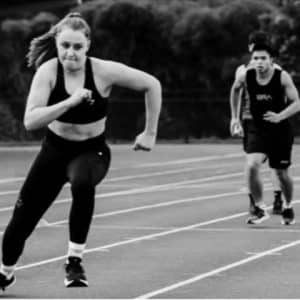
What is an acute injury?
An acute injury is one that results from a sudden onset caused by either a direct impact (extrinsic) or a sudden tear such as a sprain or strain (intrinsic).
Principles of rehabilitation- ATC IS IT
Avoid- movements that aggravate the injury
Timing- begin rehab as soon as possible
Compliance- educate athlete on their rehab needs
Individualisation- every athlete responds differently to injuries
Specific Sequencing- course of rehab protocol is determined by healing process
Intensity- exercises should be challenging but not aggravating
Total patient- consider unaffected areas in rehab process
Phases of Rehabilitation
- Rest & Protect
- Restoration of joint range of motion (ROM)
- Restoration & development of strength/power/endurance/proprioception
- Return to full sporting activities/prevention of re-injury
- Ongoing Prevention
Rest & Protect:
Immediate first aid of the injury.
Goals of phase:
- Minimize scar tissue by creating an optimal environment for healing
- Reduce loss of function & length of recovery
- Maintain/improve ROM, joint flexibility, endurance & power in unaffected body parts
- Maintain/improve CV fitness
- Address psychological barriers for return to play early
Implement PEACE and LOVE principle.
Protect- Stop activity immediately & control further secondary damage (e.g using a support/splint)
Elevation – Promote fluid flow away from injured tissue
Avoid – Anti-inflammatories and ice, unless suggested by a healthcare professional
Compression – Reduce swelling, increase comfort & pain relief
Educate – Discuss management plan and optimal loading strategies
Load – Optimally load tissue as soon as possible
Optimism – Address any mental barriers surrounding the rehabilitation journey
Vascularisation – Begin pain free cardiovascular activity to boost motivation and increase blood flow to the injured site
Exercise – Avoid pain early but begin exercise as soon as possible to strengthen direct and indirect tissues
Phase 2: Restoration of joint range of motion
Early active movement with low/no pain.
Goals of phase:
- Active & Passive ROM
- Restore joint flexibility
- Begin pain free isometric strengthening exercises
- Begin unrestricted pain free functional movement, proprioception, balance & neuromuscular control
- Maintain muscular strength, endurance & power in surrounding tissue
- Maintain cardiovascular fitness
- Address any mental barriers or limitations
Mobility Options:
Passive Mobility:
- Stretching without any muscle contractions.
Active Mobility:
- Involves contraction of one muscle in order to stretch the opposing muscle.
Static Mobility:
- Slowly lengthening muscle to its limit and holding that position for a period of time.
PNF Stretching:
- Partner brings muscle into stretch, athlete contracts muscle against resistance provided by partner.
Pain free isometrics:
- Muscles contract without moving the joints around it.
- Improve strength, neuromuscular control & decreases pain
Cardiovascular fitness
- Cycling
- Swimming
- Boxing
- Alter G running (allows reduced load on legs while running on treadmill)
Phase 3: Restoration & development of strength/power/endurance/proprioception
Goals of phase:
- Improve muscular strength, endurance, speed & power
- Restore coordination, balance, agility
- Analyze skill performance and correct biomechanical inefficiencies in motion
- Improve cardiovascular endurance
- Increase sport specific functional patterns & return to protected activity as tolerated
- Develop new neural pathways and mindset training for performance
Muscular Strength/Endurance/Power:
- Concentric (shortening) & Eccentric (lengthening) movements
- May use free weights/machines/resistance bands
- Open chain exercises (segment furthest away from body is free) – hamstring curl, leg extension
- Closed chain exercises (segment furthest away from body is fixed) – squat, push up, deadlift
Functional Exercises:
- Balance & postural control
- Pain free plyometric exercises
- Maintain cardiovascular fitness
*This phase of rehab should progressively transition from general exercises to meet sport specific demands*
Phase 4: Return to full sporting activities/prevention of re-injury
Goals of phase:
- Analyse skill performance and correct biomechanical inefficiencies in motion
- Fulfill reconditioning demands
- Increase sport specific dysfunctional patterns and return to protected activity as tolerated
- Consider psychological factors- is the athlete confident/mentally prepared to return to play?
Functional Progressions:
- Series of gradually progressive activities designed to prepare individual for return to sport
- Introduce agility skills/drills for a higher rate of force development
- Consider basic & isolated drills
- Consider complex & multi dimensional drills
- Progress if no additional pain, swelling, signs of fatigue occur and if motor performance is satisfactory
Functional Testing:
- Assess ability to perform a specific activity- usually a single maximal effort
- Introduction of on field sessions to allow for environmental adaptations
Road to recovery
It is important to note that these phases of rehabilitation are only a guideline and may vary depending on the athlete, injury & sport. Always seek guidance from an appropriate healthcare professional regarding specific injuries.
Phase 5: Ongoing Prevention
Following the return to play
- Monitoring of athlete performance & progress
- Training load management- gradual increase in load, allow for adequate rest & recovery
- Complete thorough warm ups & cool downs
- Maintain a comprehensive S&C program
References:
- Beam, J.W., 2002. Rehabilitation including sport-specific functional progression for the competitive athlete. Journal of Bodywork and Movement Therapies, 6(4), pp.205-219.
- Dhillon, H., Dhilllon, S. and Dhillon, M.S., 2017. Current concepts in sports injury rehabilitation. Indian journal of orthopaedics, 51(5), pp.529-536.
- Joyce, D. and Lewindon, D., 2016. Sports injury prevention and rehabilitation. integrating medicine and science for performance solutions, p.2016.
- Schwellnus, M.P., 2004. A clinical approach to the diagnosis and management of acute muscle injuries in sport. International SportMed Journal, 5(3), pp.188-199.

